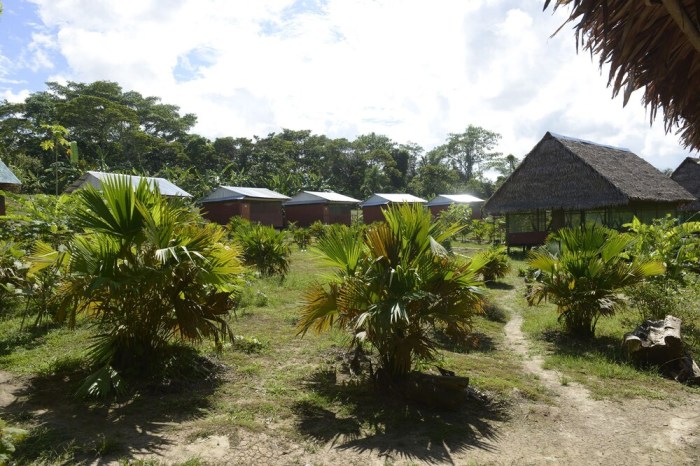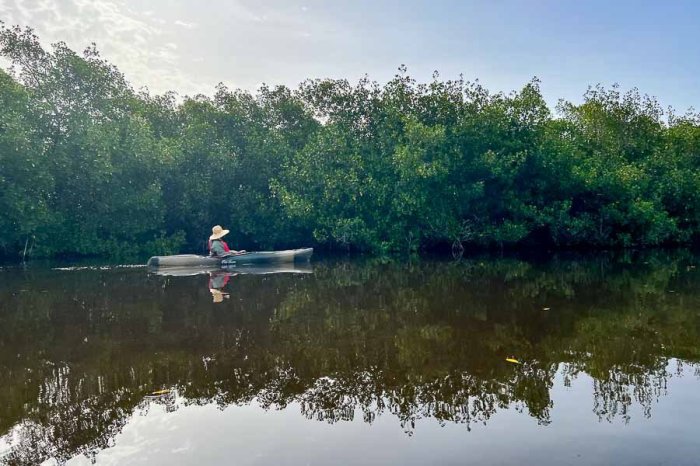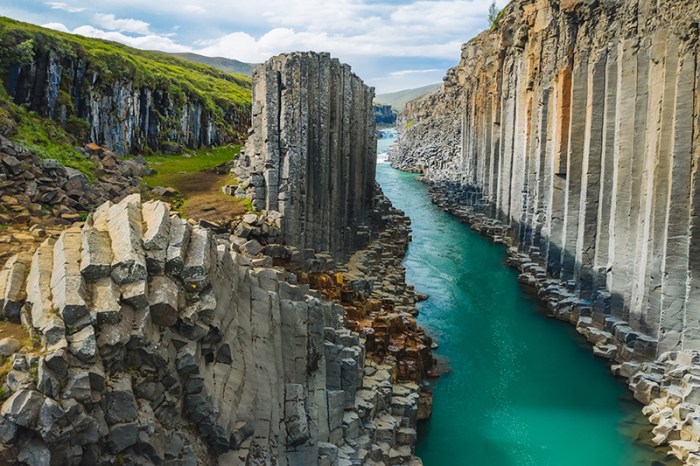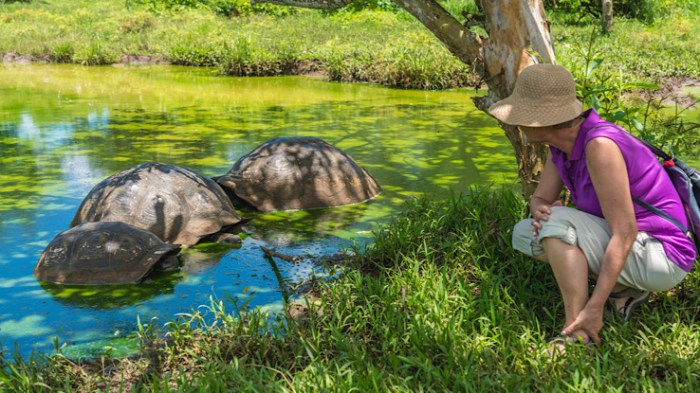Ecotours A Sustainable Journey
Ecotours offer a unique way to experience the world, blending adventure with conservation. They prioritize responsible travel, allowing visitors to immerse themselves in natural wonders while minimizing their impact. This exploration delves into the core principles of ecotourism, examining destinations, benefits, and sustainability practices.
From exploring vibrant ecosystems to supporting local communities, ecotourism presents a captivating alternative to conventional tourism. The careful consideration of environmental impact and ethical practices is central to the ecotourism philosophy, setting it apart from other travel styles.
Defining Eco-Tourism
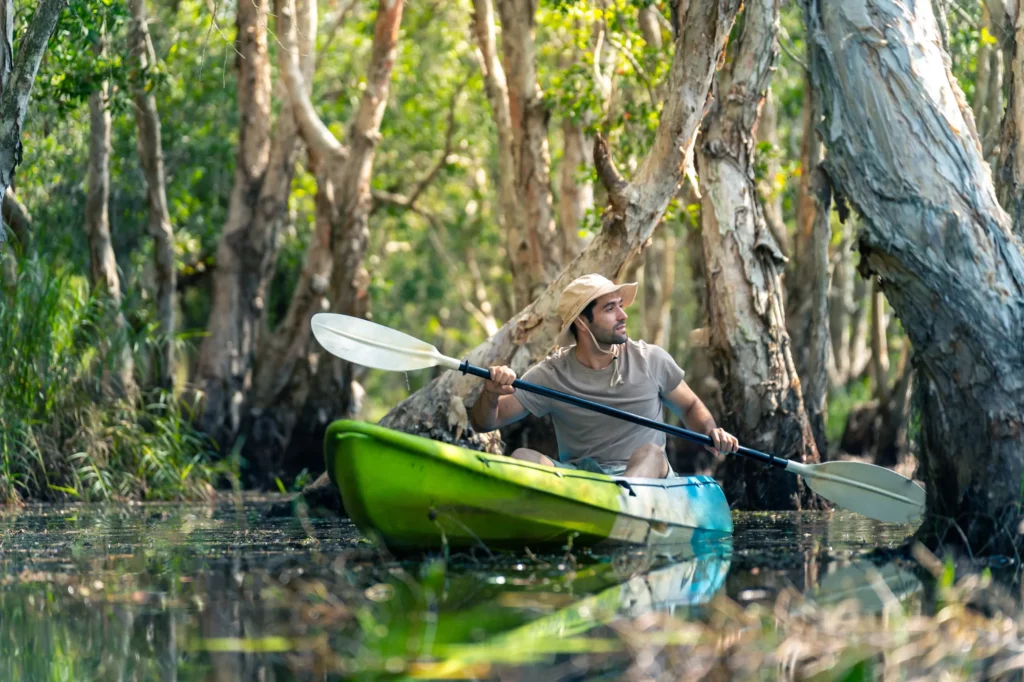
Eco-tourism, a rapidly growing sector of the travel industry, emphasizes responsible travel to natural areas, conserving the environment, and supporting local communities. It goes beyond a simple holiday; it aims to minimize negative impacts and maximize positive contributions to the destinations visited. This approach fosters appreciation for biodiversity and cultural heritage, contributing to environmental protection and sustainable development.
A crucial aspect of eco-tourism is its focus on minimizing environmental damage and maximizing positive social and economic benefits for local communities. This contrasts with conventional tourism, which often prioritizes individual enjoyment over environmental preservation or local economic growth. Understanding the key differences and principles of eco-tourism is essential for both travelers and destinations to ensure sustainable practices.
Definition of Eco-Tourism
Eco-tourism is defined as a form of tourism that involves traveling to relatively undisturbed natural areas, with the primary objective of studying, appreciating, and enjoying the natural and cultural aspects of these areas. It involves minimal disturbance to the environment and local communities, emphasizing sustainable practices and supporting conservation efforts. Crucially, it promotes awareness and appreciation for the delicate balance of nature and the importance of preserving biodiversity.
Key Differences Between Eco-Tourism and Other Forms of Tourism
Eco-tourism stands apart from other forms of tourism by its emphasis on environmental sustainability and social responsibility. Conventional tourism, for instance, often prioritizes leisure activities and comfort without regard for the environment or local cultures. Eco-tourism, conversely, seeks to minimize its environmental impact and support local communities. This distinction is reflected in the activities offered and the practices followed.
Examples of Eco-Tourism Activities
- Visiting national parks and wildlife reserves, participating in guided nature walks, and observing local flora and fauna are prime examples of eco-tourism activities.
- Sustainable accommodations like eco-lodges and homestays prioritize environmental friendliness and support local communities.
- Participating in ecotours focusing on the preservation of biodiversity, such as wildlife spotting tours or birdwatching excursions, also falls under this category.
- Community-based tourism initiatives that involve interacting with local people and learning about their traditions and culture while respecting their way of life.
Examples of Non-Eco-Tourism Activities
- Mass tourism to popular beach destinations, often characterized by large resorts and high levels of environmental impact, is not eco-tourism.
- Activities focused solely on entertainment and recreation, like visiting casinos or theme parks, without considering environmental or social consequences, are not aligned with the principles of eco-tourism.
- Tourism that involves significant environmental damage, such as excessive off-road driving in fragile ecosystems, is not eco-tourism.
- Activities that do not support local communities or respect their traditions and cultures are not part of eco-tourism.
Ethical Considerations in Eco-Tourism
Ethical considerations in eco-tourism are paramount. These considerations include minimizing environmental impact, respecting local cultures, and ensuring fair compensation for local communities. Supporting businesses that adhere to sustainable practices and prioritizing experiences that educate and promote conservation are crucial aspects of responsible travel.
Comparison of Eco-Tourism and Conventional Tourism
| Characteristic | Eco-Tourism | Conventional Tourism | Key Differences | Examples |
|---|---|---|---|---|
| Environmental Impact | Minimizes impact, promotes conservation | Potentially damaging, high consumption | Eco-tourism prioritizes sustainability; conventional tourism often prioritizes individual comfort and enjoyment. | Eco-lodge,; mass-tourism resorts |
| Economic Impact | Benefits local communities, supports sustainable development | Can be exploitative, money flows away from locals | Eco-tourism creates sustainable income for locals; conventional tourism may lead to dependence on external sources. | Homestays, large hotel chains |
| Cultural Impact | Respects local traditions, promotes cultural exchange | May lead to cultural commodification or loss of identity | Eco-tourism fosters appreciation and understanding; conventional tourism may result in the loss of traditional practices or the commercialization of culture. | Cultural tours; cultural appropriation |
| Social Impact | Supports local livelihoods, empowers communities | Can cause displacement or exploitation of locals | Eco-tourism strives for community empowerment; conventional tourism may lead to social issues. | Community-based tourism, labor exploitation |
Ecotourism Destinations
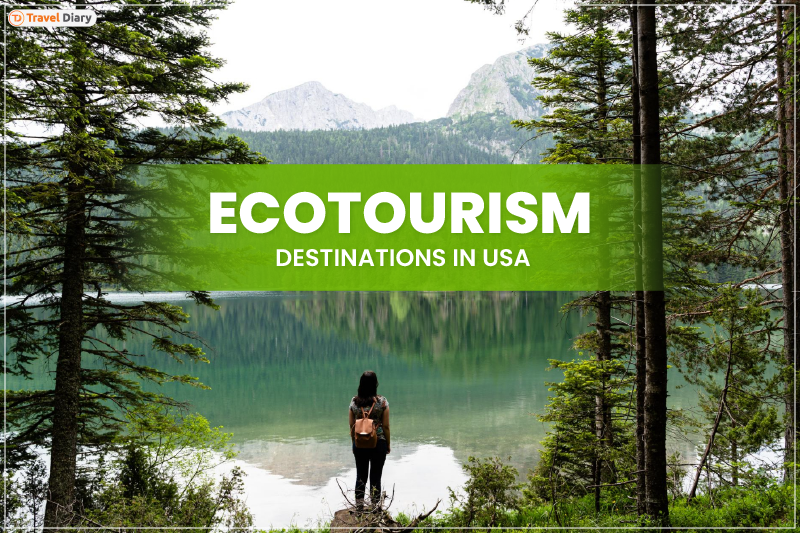
Ecotourism thrives on the preservation and appreciation of natural environments. Globally, diverse regions offer unique opportunities for immersive experiences while minimizing environmental impact. These destinations often feature rich biodiversity, showcasing the intricate interconnectedness of nature and culture.
Exploring these regions allows travelers to connect with local communities, fostering respect for their traditions and sustainable practices. Ecotourism destinations are not just about sightseeing; they are about understanding the delicate balance between human activity and the environment.
Geographical Regions and Locations
Ecotourism destinations are found across the globe, spanning diverse climates and ecosystems. From the tropical rainforests of South America to the pristine coral reefs of Southeast Asia, these regions offer unparalleled opportunities for experiencing nature’s wonders. The appeal lies in the unique biodiversity and natural beauty each location provides. Specific regions renowned for their ecotourism potential include the Amazon Basin, Costa Rica, the Galapagos Islands, Southeast Asia, and parts of Africa.
Specific Destinations and Their Characteristics
The Amazon Basin, with its vast rainforest, is a treasure trove of biodiversity. This region is home to countless species of plants and animals, including iconic creatures like jaguars and monkeys. The unique ecosystem supports diverse indigenous cultures with rich traditions. Costa Rica, known for its exceptional biodiversity, offers diverse landscapes from rainforests to cloud forests and beaches. The country actively promotes ecotourism, highlighting sustainable practices. The Galapagos Islands, renowned for their unique flora and fauna, present a fascinating example of evolutionary adaptation. They are a global biodiversity hotspot. Southeast Asia offers a mix of tropical islands, jungles, and mountains, providing diverse ecotourism experiences.
Types of Ecotourism Experiences, Ecotours
Ecotourism experiences range from wildlife viewing and nature walks to cultural immersion. Wildlife viewing tours in the African savannas, for instance, provide opportunities to observe elephants, lions, and giraffes in their natural habitats. Nature walks through lush rainforests in South America offer opportunities to encounter diverse flora and fauna. Cultural immersion experiences allow travelers to interact with local communities, learn about their traditions, and participate in their daily lives. These activities highlight the cultural significance of these destinations.
Ecotourism Destinations Table
| Destination | Key Attractions | Biodiversity Highlights | Sustainability Initiatives |
|---|---|---|---|
| Amazon Basin | Vast rainforest, jaguar sightings, diverse flora and fauna, indigenous cultures | High biodiversity, unique species adaptations, tropical ecosystem | Community-based tourism projects, sustainable forestry initiatives, and conservation efforts |
| Costa Rica | Rainforests, cloud forests, beaches, volcanoes, and diverse wildlife | High biodiversity, endemic species, and diverse ecosystems | Protected areas, sustainable agriculture, and reforestation programs |
| Galapagos Islands | Unique wildlife (e.g., giant tortoises, marine iguanas), volcanic landscapes, and diverse marine life | Endemic species, evolutionary adaptations, unique marine ecosystem | Strict environmental regulations, research programs, and controlled tourism |
| Southeast Asia | Tropical islands, rainforests, rice paddies, and cultural villages | High biodiversity, diverse flora and fauna, and unique ecosystems | Community-based tourism, sustainable agriculture, and conservation of marine life |
Benefits and Impacts of Ecotourism
Ecotourism, a form of responsible travel, presents a unique opportunity for both visitors and local communities. It offers a chance for travelers to experience pristine natural environments and cultural heritage while contributing to the well-being of the destination. This approach fosters a positive feedback loop, where environmental conservation is intertwined with economic and social development.
Ecotourism can bring significant economic benefits to local communities, ranging from job creation to infrastructure improvements. It also fosters a deeper appreciation for the environment and promotes conservation efforts. Understanding the interplay between economic gains, environmental impacts, and social/cultural influences is crucial for ensuring the long-term sustainability of ecotourism.
Economic Benefits for Local Communities
Ecotourism initiatives can create numerous economic opportunities for local communities. Direct employment is often generated through guiding, hospitality, and related services. Indirect benefits, such as increased business activity in local markets and the development of supporting industries, further bolster the local economy. For instance, communities in Costa Rica, renowned for their ecotourism offerings, have seen a substantial rise in income and improved living standards.
Environmental Impact of Ecotourism
Ecotourism, when managed responsibly, can have a positive impact on the environment. It can encourage conservation efforts by raising awareness about the importance of protecting natural resources. However, poorly planned ecotourism can lead to negative environmental consequences. Excessive visitor numbers can strain local resources, like water and sanitation systems, and put pressure on fragile ecosystems. For example, irresponsible hiking practices can damage sensitive habitats, while the introduction of invasive species can occur due to inadequate visitor management protocols.
Ecotourism and Conservation Efforts
Ecotourism can be a powerful tool for conservation. By generating revenue directly linked to the preservation of natural resources, ecotourism can incentivize the protection of biodiversity hotspots. Funds generated can support the creation of protected areas, the implementation of conservation programs, and the training of local communities in sustainable practices. For instance, the success of national parks often relies on revenue generated from ecotourism, allowing for the continued preservation of unique ecosystems.
Social and Cultural Impacts on Local Populations
Ecotourism can have a profound impact on the social and cultural fabric of local communities. It can promote cultural exchange, foster a sense of pride in local traditions, and enhance understanding between visitors and residents. However, it’s crucial to ensure that ecotourism does not lead to cultural commodification or the exploitation of local communities. Respectful engagement and cultural sensitivity are vital for ensuring positive social impacts.
Benefits, Drawbacks, and Sustainable Practices of Ecotourism
| Benefit | Drawback | Sustainable Practice | Example |
|---|---|---|---|
| Economic development for local communities | Strain on local resources (e.g., water, sanitation) | Community-based tourism initiatives | Establishing local cooperatives to manage tourist activities |
| Conservation of natural areas | Increased visitor pressure on fragile ecosystems | Limiting visitor numbers and implementing responsible trekking guidelines | Establishing visitor quotas and implementing strict regulations for protected areas |
| Cultural exchange and understanding | Potential for cultural commodification | Promoting cultural sensitivity among tourists and respecting local customs | Providing authentic cultural experiences and engaging in respectful interactions |
| Raising awareness about environmental issues | Negative impact on local environments | Educating tourists about the importance of environmental protection | Implementing educational programs for tourists and incorporating environmental themes into tour itineraries |
Ecotourism and Sustainability: Ecotours
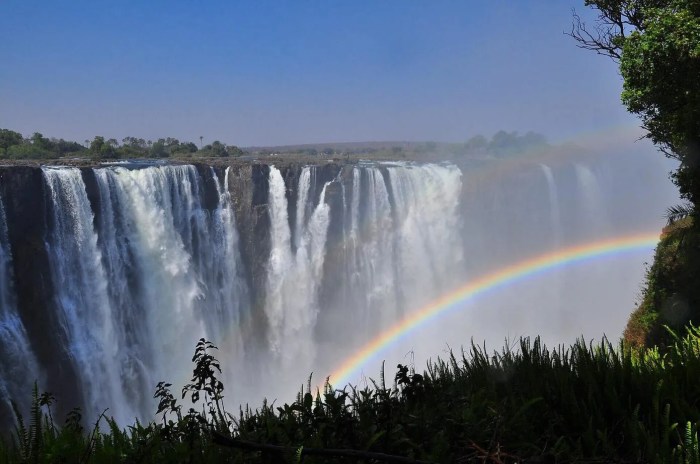
Source: womenwanderingbeyond.com
Ecotourism, while offering opportunities for exploration and connection with nature, necessitates a profound commitment to sustainability. Balancing the needs of visitors with the preservation of fragile ecosystems is crucial for the long-term viability of ecotourism destinations. Sustainable practices are not just ethical considerations but also essential for ensuring the continued enjoyment of these unique environments for future generations.
Importance of Sustainable Practices
Sustainable ecotourism practices are paramount for mitigating the negative impacts of human activity on the environment. This involves minimizing resource consumption, promoting responsible waste management, and respecting local cultures and traditions. By integrating sustainable principles into every aspect of the ecotourism experience, the industry can contribute positively to the preservation of biodiversity and cultural heritage. Adopting such practices ensures the long-term health and integrity of the ecosystems visited.
Minimizing Environmental Impact
Various methods can be employed to minimize the environmental footprint of ecotourism activities. These include reducing carbon emissions through the use of eco-friendly transportation, implementing waste reduction strategies, and promoting responsible water and energy conservation. Minimizing the environmental impact involves careful planning and execution of each ecotourism activity, prioritizing local communities, and respecting their way of life.
Role of Responsible Tourism
Responsible tourism plays a vital role in protecting fragile ecosystems. It involves encouraging tourists to adopt environmentally conscious behaviors and promoting the preservation of local biodiversity. Educating tourists about the importance of respecting the environment and local cultures fosters a sense of shared responsibility and ensures the protection of these delicate environments. Responsible travel practices, such as minimizing waste, conserving water, and avoiding disturbance to wildlife, are key to the preservation of these delicate ecosystems.
Examples of Sustainable Ecotourism Initiatives
Several ecotourism initiatives worldwide exemplify a commitment to sustainability. These initiatives often prioritize local communities, engage in conservation efforts, and utilize eco-friendly practices. One prominent example is the involvement of local communities in managing and benefiting from ecotourism activities, ensuring that the economic benefits are shared equitably. These initiatives emphasize the importance of collaboration between tourists, local communities, and environmental organizations to ensure a sustainable future.
Eco-Friendly Accommodations and Transportation
Choosing eco-friendly accommodations and transportation is crucial for minimizing the environmental impact of ecotourism. The table below presents examples of such options, highlighting the key features that contribute to their sustainability.
| Accommodation Type | Example | Sustainability Features | Transportation Option |
|---|---|---|---|
| Eco-lodges | A lodge built with locally sourced materials, utilizing renewable energy sources, and implementing water conservation strategies. | Locally sourced materials, renewable energy, and water conservation | Electric bikes or bicycles |
| Glamping Sites | Glamping sites that minimize their environmental impact through waste reduction and water conservation efforts, often featuring solar panels for power. | Waste reduction, water conservation, and solar power | Electric vehicles or hybrid vehicles |
| Community-based Hotels | Hotels run by local communities, where profits are reinvested in the local area and support local conservation efforts. | Community ownership, reinvestment in conservation, and support for local businesses | Local transportation services (e.g., Tuk-tuks or shared taxis) |
| Homestays | Homestays with a commitment to sustainable practices, emphasizing local culture and responsible use of resources. | Respect for local culture, responsible resource use, and low-impact practices | Walking or cycling tours |
Ecotourism Challenges and Future Trends
Ecotourism, while offering numerous benefits, faces considerable challenges. Balancing the desire for economic growth with environmental protection and social equity is crucial for its long-term success. Understanding these hurdles and adapting to emerging trends are essential for the responsible and sustainable development of ecotourism destinations.
Major Challenges in Ecotourism
Ecotourism initiatives often encounter obstacles related to infrastructure, accessibility, and environmental concerns. Inadequate infrastructure, such as transportation networks and accommodation facilities, can deter tourists and limit the economic impact of ecotourism. Poorly planned infrastructure can also negatively affect the local environment. Moreover, ensuring accessibility for diverse groups of tourists, including those with disabilities, is crucial for inclusivity and broader participation. Environmental concerns, including pollution, habitat destruction, and resource depletion, must be addressed proactively to maintain the integrity of the natural environment.
Evolving Trends in Ecotourism
Ecotourism is evolving in response to changing consumer demands and technological advancements. The demand for unique and immersive experiences is increasing, driving innovation in tour design and activities. This trend includes immersive experiences like homestays with local families or specialized nature walks with expert guides that provide a deeper understanding and appreciation of the destination’s culture and environment. The integration of technology is also transforming the ecotourism landscape. Digital platforms can enhance accessibility, promote sustainable practices, and provide valuable insights into local ecosystems. Examples include virtual reality tours that allow potential visitors to experience a destination before traveling, or apps that provide real-time information about wildlife sightings.
Ecotourism and Social-Economic Change
Ecotourism holds significant potential for positive social and economic change in vulnerable communities. Properly managed ecotourism initiatives can generate employment opportunities, improve local infrastructure, and enhance community well-being. However, it’s critical to ensure that the benefits are distributed equitably and that local communities are empowered to participate in decision-making processes. The success of this model relies on fair compensation for local guides and community members, providing education and skill development opportunities, and ensuring local participation in the planning and management of the ecotourism ventures.
Emerging Ecotourism Trends
Several emerging trends are shaping the future of ecotourism. Sustainable and responsible travel practices are becoming increasingly important, with tourists seeking out operators and destinations committed to environmental protection. Sustainable tourism models, for instance, can encourage the use of renewable energy, the preservation of biodiversity, and the reduction of waste. Another trend is the focus on unique experiences and cultural immersion, with travelers seeking authentic interactions with local communities. This approach prioritizes a deep understanding of local cultures, traditions, and customs, fostering respect and understanding between tourists and the host communities.
Future Trends in Ecotourism
| Trend | Potential Problems | Solutions | Examples |
|---|---|---|---|
| Emphasis on sustainable practices | Difficulties in implementing stringent standards, potential for greenwashing | Clearer certifications and regulations, greater transparency and accountability, cand onsumer education | Certification programs like the Global Sustainable Tourism Council (GSTC), eco-labels on accommodations and activities |
| Technological integration | Digital divide, potential for over-reliance on technology, data privacy concerns | Targeted training programs for local communities, ensuring equitable access to technology, and robust data protection measures | Use of virtual reality for immersive experiences, mobile apps for wildlife tracking, and information |
| Focus on unique experiences. | Overcrowding in popular destinations, potential for negative impacts on fragile ecosystems | Diversification of destinations, promoting less-visited areas, and stricter visitor management | Experiential tours focusing on specific wildlife, and cultural immersion programs in remote communities |
| Community-based tourism | Challenges in community organization, potential for conflicts of interest | Empowering local communities in decision-making, promoting fair compensation, and establishing transparent partnerships | Homestays with local families, community-run ecotourism ventures |
Ecotourism Activities
Ecotourism is more than just a vacation; it’s a journey that fosters a deeper appreciation for the natural world and local cultures. A key aspect of this experience involves engaging in activities that are mindful of the environment and the communities impacted. These activities, carefully planned and executed, contribute to the preservation of ecosystems and empower local economies.
Ecotourism Activity Types
Various activities contribute to the ecotourism experience, each with its unique appeal. Wildlife viewing, a popular choice, offers the chance to observe animals in their natural habitats. Hiking allows exploration of diverse landscapes, fostering an appreciation for the environment’s beauty and diversity. Cultural experiences provide insight into the traditions and lifestyles of local communities, creating a more holistic understanding of the destination. These experiences can be as simple as attending a local festival or learning about traditional crafts, fostering understanding and respect.
Responsible Behavior in Ecotourism
Responsible behavior is paramount in ecotourism. Minimizing environmental impact is crucial. This includes reducing waste, conserving water, and respecting wildlife and their habitats. Responsible interactions with local communities are equally vital. Support for local businesses, respecting local customs, and participating in ethical and sustainable tourism practices ensure a positive and lasting impact on the environment and the people who call it home.
A Hypothetical Ecotourism Experience
Imagine a week-long ecotourism trip to the Amazon rainforest in Ecuador. The trip emphasizes responsible travel. The first few days involve jungle hikes, led by local guides who share their knowledge of the flora and fauna. Activities focus on wildlife viewing through birdwatching tours and night walks to spot nocturnal creatures. Sustainable accommodations are key, with eco-lodges that use renewable energy and minimize their environmental footprint. The trip includes a visit to a local community, where participants learn about traditional farming practices and sustainable living techniques. The local community also benefits financially through the ecotourism revenue. This ensures the long-term viability of the ecotourism experience and respects the community’s well-being. Participants are encouraged to pack reusable water bottles and to avoid single-use plastics. The lodge’s waste management system also prioritizes recycling and composting. This commitment to sustainability extends beyond the lodge and into the surrounding ecosystem.
Examples of Ecotourism Activities and Their Environmental Impact
| Activity | Description | Potential Positive Environmental Impact | Potential Negative Environmental Impact (if not managed responsibly) |
|---|---|---|---|
| Wildlife Viewing | Observing animals in their natural habitat. | Raises awareness of biodiversity and conservation needs. Provides funding for protected areas. | Disturbance of animal behaviour, habitat destruction due to increased traffic. |
| Hiking | Exploring trails and landscapes. | Promotes appreciation for natural beauty. Can fund trail maintenance and restoration. | Erosion, habitat destruction can occur if trails are poorly managed. Increased pollution if waste isn’t properly disposed of. |
| Cultural Experiences | Learning about local traditions and customs. | Supports local communities, promotes cultural preservation, and increases understanding between different cultures. | Cultural appropriation is not conducted with respect and sensitivity. Potential for commodification of culture. |
| Photography Tours | Focusing on capturing images of the natural environment. | Raises awareness about the beauty and importance of the environment. Potential for conservation through funding from tourism. | It can negatively impact wildlife if not done carefully. Potential for disturbance of wildlife. |
Ecotourism and Technology
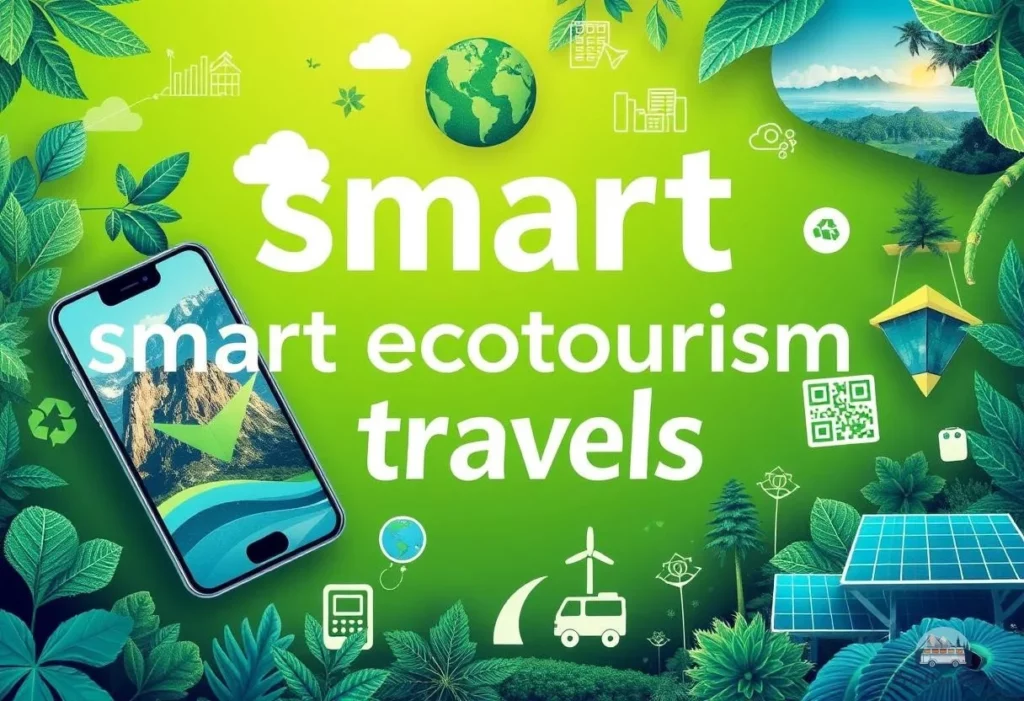
Technology is rapidly transforming the ecotourism landscape, offering exciting opportunities to enhance visitor experiences, promote sustainability, and foster conservation efforts. This integration of technology allows for a more immersive and informative journey for tourists while simultaneously supporting responsible practices and conservation initiatives.
The Role of Technology in Enhancing the Ecotourism Experience
Technology can significantly improve the ecotourism experience for visitors. Interactive maps and virtual reality (VR) simulations can transport tourists to remote locations and provide immersive experiences, enabling them to visualize and understand the ecosystems they are visiting. This immersive experience fosters a deeper appreciation for the environment and its delicate balance. Furthermore, digital platforms provide instant access to information about local cultures, wildlife, and conservation initiatives, enriching the learning experience.
Examples of Technology Promoting Responsible Tourism Practices
Several applications of technology promote responsible tourism. Mobile apps can provide real-time information about local regulations and sustainable practices, guiding visitors towards eco-friendly choices. GPS tracking systems allow for precise monitoring of wildlife populations, helping to identify threats and adjust conservation strategies. Online booking platforms can be designed to prioritize accommodations and tour operators committed to sustainability and local community involvement.
Technology’s Role in Increasing Conservation Awareness
Technology plays a crucial role in raising awareness about conservation efforts. Social media platforms can be used to share compelling stories and images of local ecosystems and wildlife, fostering a sense of connection and responsibility. Citizen science initiatives leverage technology to gather data on environmental issues, enabling researchers and conservationists to understand and address these issues more effectively. Interactive websites and online documentaries can educate tourists about the importance of conservation and the threats facing various species and ecosystems.
Ethical Considerations of Using Technology in Ecotourism
The use of technology in ecotourism must consider ethical implications. Privacy concerns regarding data collection and sharing must be addressed, and ensuring that local communities benefit from the use of technology is paramount. Digital divides can exacerbate existing inequalities, requiring careful consideration of how technology is deployed to ensure equitable access and benefit sharing. It is essential to prioritize transparency and accountability in the use of technology to maintain public trust and avoid negative impacts.
Comparison of Traditional and Technology-Driven Ecotourism Methods
| Characteristic | Traditional Ecotourism | Technology-Driven Ecotourism | Comparison/Contrast |
|---|---|---|---|
| Information Access | Limited, often relying on printed materials or local guides. | Real-time access to information via apps, websites, and interactive displays. | Technology provides greater accessibility and immediacy of information. |
| Engagement with Local Communities | Often involves direct interaction but may be limited by language barriers or logistical constraints. | Online platforms and digital tools can enhance communication and collaboration with local communities. | Technology can facilitate communication and foster stronger connections. |
| Conservation Monitoring | Relies on visual observations and manual data collection, which can be time-consuming and less accurate. | Utilizes GPS tracking, remote sensing, and data analytics for precise monitoring and analysis. | Technology offers a more precise and efficient approach to conservation monitoring. |
| Sustainability Practices | Often dependent on individual visitor awareness and compliance with guidelines. | Technology can be integrated into platforms to promote responsible choices, provide feedback on visitor impact, and support eco-friendly initiatives. | Technology can enhance the implementation of sustainable practices. |
Conclusive Thoughts
In conclusion, ecotours represent a powerful force for conservation and community development. By embracing sustainable practices and responsible travel, ecotourists contribute to the preservation of natural wonders and support local economies. This insightful journey into ecotourism highlights its profound impact on both the environment and the communities it touches, underscoring the importance of mindful travel choices.
